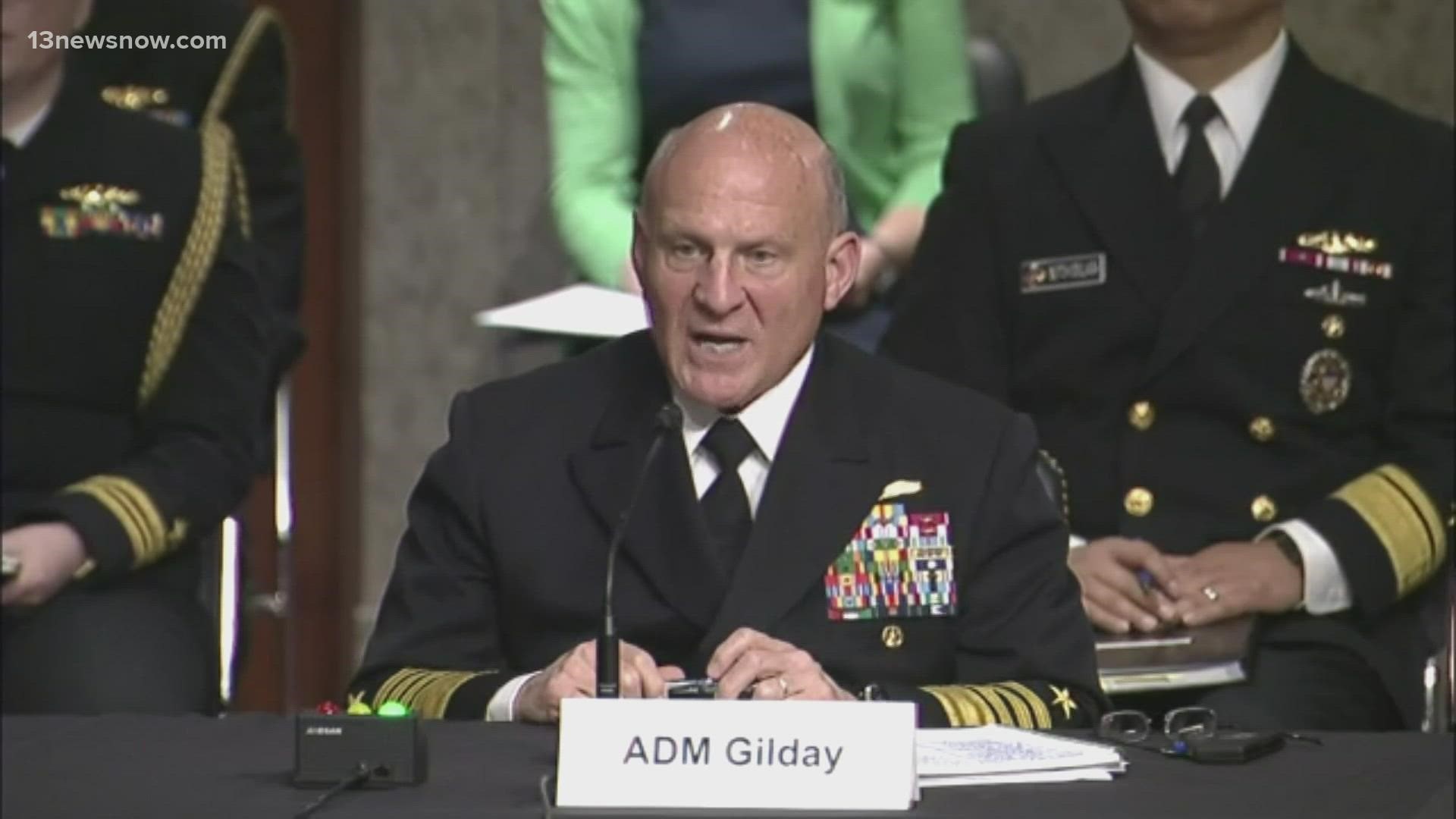WASHINGTON — If the United States had to fight two separate wars in two different places at the same time, the Navy's top admiral made a startling admission this week.
Chief of Naval Operations Mike Gilday said, without more ships, his branch would be unprepared to handle it right now.
"I think we'd be challenged," he said. "And right now, the force is not sized to handle two simultaneous conflicts. It's sized to fight one and keep a second adversary in check. But in terms of two all-out conflicts, we are not sized for that."
The current fleet stands at 298 ships. However, Gilday told the Senate Armed Services Committee on Thursday that he supports the Biden Administrations' proposal to reduce the fleet to 280 ships by 2027.
Gilday said it's smarter to invest now in newer, more sophisticated and more lethal ships, rather than wasting money on older, less capable vessels.
"We cannot field a fleet larger than one we can sustain," he said. "And in today's fiscal levels, quantity simply cannot substitute for quality."
Committee Republicans slammed the Navy's FY23 budget proposal and its new 30-year Shipbuilding Plan.
Sen. James Inhofe (R-Oklahoma) called the budget "inadequate." Sen. Josh Hawley (R- Missouri) said it is "disturbing" that only one of the Navy's three 30-year shipbuilding plan options would get the Navy to the Congressionally-mandated level of 355 ships by 2052.
"I mean, if that's not a wake-up call to the committee, I don't know what is," he said.
The Navy is already on track to decommission five Ticonderoga Class guided missile cruisers this year, due to their costly repair work. The FY23 budget proposal calls for retiring five additional cruisers.
The Navy's stated goal is to eliminate the entire 22-ship cruiser fleet by the end of Fiscal Year 2027.

